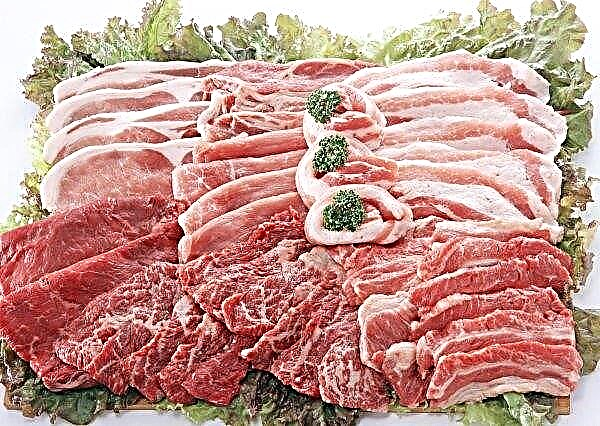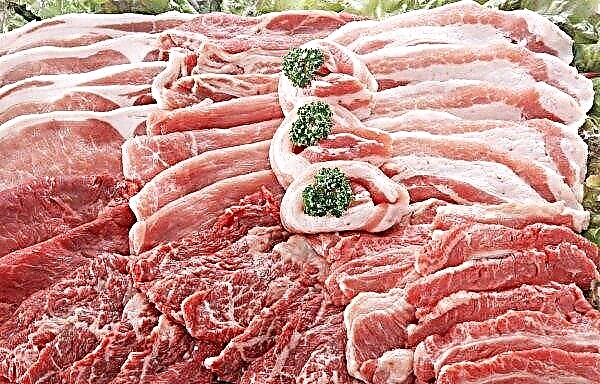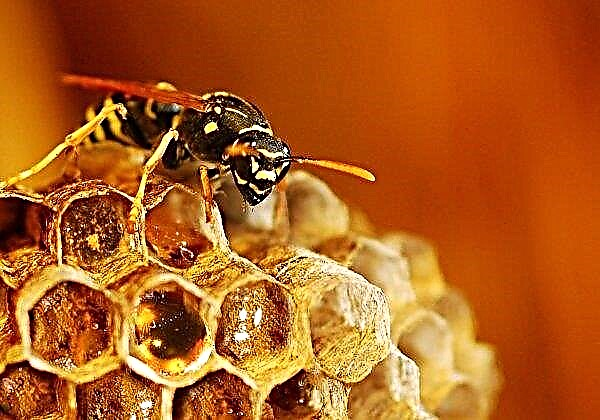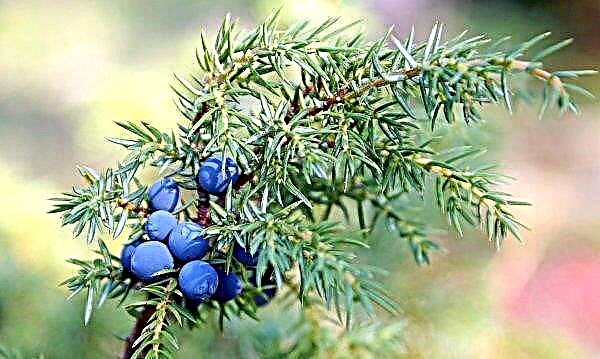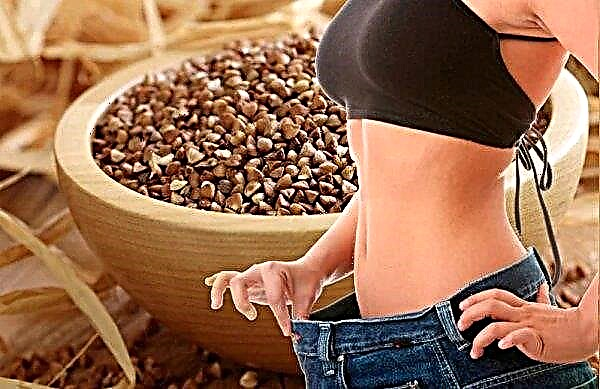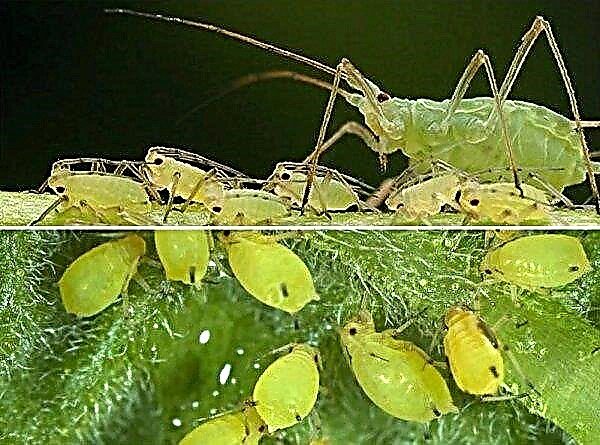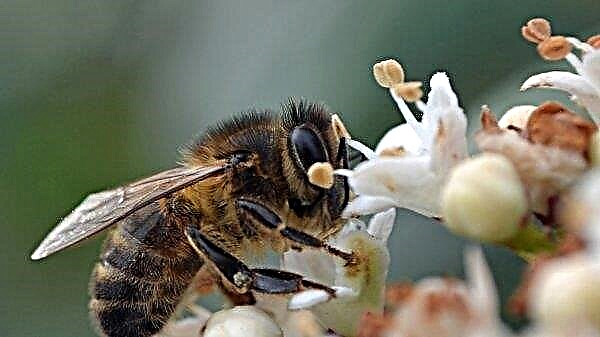For the cactus of prickly pear to bloom during cultivation at home, he will need special care. The basic rules of agricultural technology, as well as the names of the most popular varieties will be discussed below.
Plant species and their description
In the wild, about 300 species of prickly pear are found.
The most popular of them cultivated at home:
- Fig - four-meter bushes consist of branching succulent segments covered with stiff thorns. The flowers are yellow, funnel-shaped. After pollination, pear-shaped fruits with sweet flesh are formed, which are actively used in cooking.

- Small hair - the tree-like representative grows up to 1 m in height. The flat jointed stem is covered with golden and white glochidia (setae). During flowering, up to 10 lemon-colored flowers are formed on each shoot, which after pollination turn into fruits. In areas of natural distribution, not only fruits are used for food, but also the stems of the plant.

- Multi-barbed - bushes reaching 15 cm in height, consist of green-blue segments covered with white bloom. Spines reach a length of 12 cm, arranged in 6 pieces. on one segment. The flowers are yellow, large.
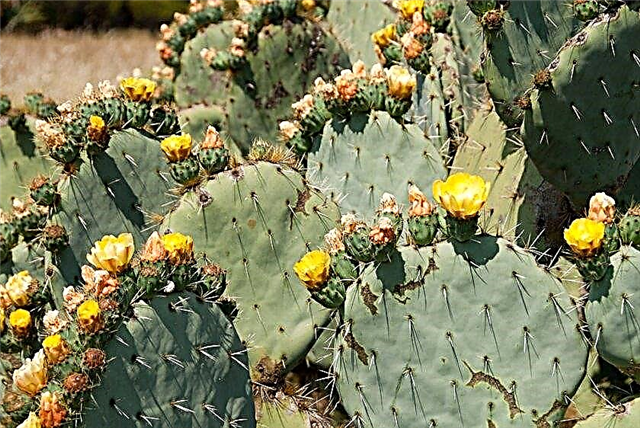
- Berger - the height of the bushes is up to 1 m. The shoots consist of segments 25 cm long. Spikes of different sizes, yellow. The flowers are bright yellow with a green pestle.
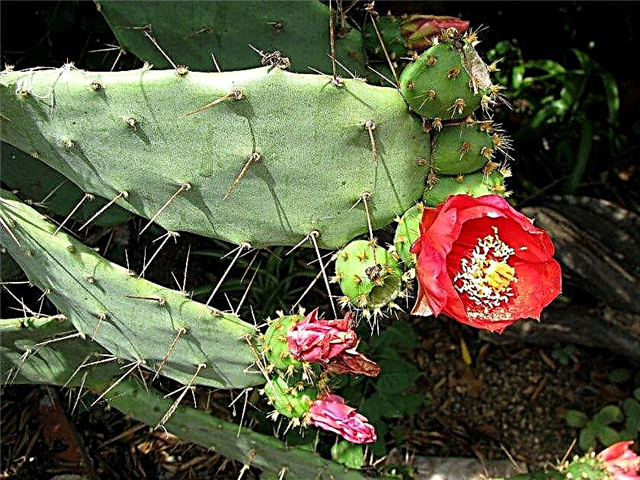
- Lindheimer - plants reach a height of 3.5 m. Shoots are divided into segments covered with translucent glochidia. The flowers are large, bright yellow, the fruits are purple. The plant is used for food and medicinal purposes.
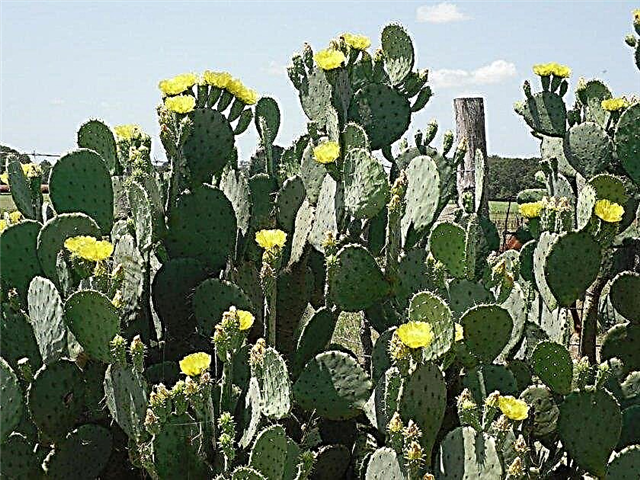
How to choose the right store
When buying prickly pear, be guided by the following rules so as not to acquire a non-viable plant:
- The plant should not stagger in a pot.
- In healthy prickly pears, all segments of the stem have a dense structure and are covered with thorns or glochidia - softened tissues or spots indicate the presence of a fungal disease.
- Cacti that are damaged mechanically during transportation can be bought, but it is worth considering that they will need more delicate care.
- It is better to acquire young plants - adult cacti adapt for a long time to a new environment and may die.
Important! WITHletting month nAfter buying a cactus, you need to transplant it, but not earlier. Plants need time to get used to a new place.
Home Care
Prickly pears rarely bloom at home. To achieve flowering, it is necessary to take into account the periods of plant activity throughout the year and, depending on this, create conditions similar to natural ones.
Step-by-step care instructions for months:
- January February - organize additional illumination with phytolamps for at least 12 hours, exclude complete drying of the soil. Such a move compensates for the lack of lighting and allows you to activate the processes of life.
- March - start spraying, organize shading from direct sunlight, gradually accustom plants to them.
- April is the time to start raising the air temperature, increasing the intensity of irrigation and feeding.
- May - Do not forget to feed every 2 weeks, if necessary, transplant plants. During this period, cacti actively grow and prepare for flowering; they are able to tolerate scorching sun rays, which makes it possible to rearrange them on the street or open balcony.
- June July - flowering begins. Do not rotate the plants, and especially do not change their location, otherwise they will drop buds.
- August - prepare the plants for the rest period, creating fluctuations in night and day temperatures.
- September - reduce watering, refuse to feed. Rearrange the cacti contained in the street.
- October - water once every 2 weeks.
- November December - completely stop watering, ensure lower temperature, do not change the location of plants.
Below we will consider more detailed recommendations regarding lighting, temperature and humidity.
Location and optimal conditions
Prickly pears belong to photophilous plants and are able to develop normally even in direct sunlight. In an apartment it is better to place them on the southern windowsills. When cultivated in the southern regions in May, you can transplant plants in open ground - this will increase the chances of achieving flowering with subsequent fruiting.
The temperature regime in the summer does not need to be changed, cacti can tolerate the elevated values well within + 35 ℃. Starting in August, nighttime temperatures should be 6 6 below daytime. In the same period, plants can be transplanted from open to closed ground. In September, gradually lower the temperature by +3 ... + 5 ℃ per week, so that by November-December the air temperature would be +6 ... + 12 ℃.
In the same period, plants can be transplanted from open to closed ground. In September, gradually lower the temperature by +3 ... + 5 ℃ per week, so that by November-December the air temperature would be +6 ... + 12 ℃.
Humidity should fluctuate between 30–40% throughout the season. Soil moisture - 40%, with the exception of the summer period: in summer, the moisture indicator should reach 50%.
Watering and fertilizing
During the dormant period, plants are not watered at all. In January, watering is carried out for the first time. If there is a problem with the absorption of water by the soil, you need to install the pot in a bowl of water for 10-15 minutes; Further, the irrigation intensity is increased, introducing water after drying of the soil by 2 cm in depth. The water is used clean, settled or filtered. Optimum fluid temperature + 18 ℃.
Important! An overdried earthen lump at the beginning of an active growing season can cause the death of roots. To avoid this, you can carry out the first 2 irrigation with sparkling water, followed by loosening of the upper soil layer.
Fertilizers are applied from March to July in liquid form once every 14 days. Top dressing alternates with watering - for example, in early March, the soil is moistened with water, fertilizer is applied after 2 weeks, in April the interval between dressing and watering is reduced to 7-10 days.
Mineral complexes with a low nitrogen content are used - up to 5% of the total volume. Pokon top dressings for cacti and succulents have proven themselves well.
The main nutrients required prickly pear:
- potassium;
- phosphorus;
- calcium.

The root system of plants cultivated at home is more delicate than those that grow in the wild, so fertilizing can cause burns. When introducing the mineral complex for the first time, divide the dosage in the instructions by 2 and observe the condition of the plant. If the prickly pear reacted normally, increase the dosage by 20% in subsequent times, gradually bringing it to the level indicated in the instructions.
Did you know? In the wild, cacti pollinate not only insects, but also small birds, such as hummingbirds.
Transfer
The transplant is carried out every 2 years with home cultivation. For planting, you can choose any pot to your taste, except for the general elongated capacity - in it the soil will quickly dry out and become depleted due to the large accumulation of plants. The new pot should be 5 cm larger and 3 cm deeper.

The soil can be composed independently by mixing in equal proportions:
- leaf-soddy soil with 5% clay;
- coarse sand.
The main nuance of the transplant is the movement of the plant from dry soil to dry, which is not so simple.
- A couple of days before transplantation, it is necessary to disinfect the prepared soil by frying in the oven.
- Then the soil must be moistened. Water is added to the substrate at the rate of 400 ml per 1 kg of soil.
- Before planting, crushed activated carbon is put into it at the rate of 10 tablets per 1 kg of substrate and mixed.
- At the bottom of the pot lay a layer of expanded clay, and then fill it with soil, not reaching the edge of 2-3 cm.
- In the center, make a recess under the root system.
To remove a plant from an old pot, it must be laid on its side, holding the plant with one hand, and gently tap the bottom with the other. Then the roots need to be freed from the ground, their condition should be assessed, dried and rotten ones need to be removed, and powdered with activated carbon.
After all these manipulations, the roots are carefully placed in the recess and sprinkled with soil. After a week, you can water the plants by adding mineral fertilizers to the water. Further care is carried out according to the standard scheme.
Pruning
The shoots quickly branch, so the plant takes on an unsightly appearance - because of this, once in 1-2 years, in March, prickly pears must be carried out forming pruning.

Trimming is carried out with a sharpened knife or blade; previously the tool must be treated with 40% alcohol. The slice is made strictly by connecting the segments. It is better to shorten plants that are too tall to 60 cm so that the root system can ensure their full nutrition.
After trimming, all sections are powdered with powdered activated carbon. During the week after pruning, prickly pears should not be watered. Cropped segments can be used for propagation.
Did you know? In areas of natural distribution, tall species of prickly pear are planted like a hedge in order to protect housing and livestock from wild animals such as coyotes and wild dogs.
Dormancy and flowering period
During dormancy, prickly pear comes in October. At this time, the process of sap flow slows down, and nutrition occurs only due to photosynthesis, so plants should receive a sufficient amount of light.
If all conditions of care are met, in March the plants leave the dormant period and preparation for flowering begins. In late May, flower buds appear at the ends of the shoots.
At this time, the plant should not be touched or the conditions for caring for it should be changed (intensity of watering and fertilizing, temperature and humidity modes). If at least one condition changes, prickly pear will respond by dropping the kidneys or converting them into vegetative shoots.
Plants bloom in June-July. Flowering lasts about a month. With successful pollination, rounded berries are formed in place of flowers with a row of thorns in the upper part.
Breeding methods
At home, prickly pears are propagated by seeds and cuttings. Seeds can be purchased in a specialized store, because even with all the rules of care, it is difficult to achieve the flowering of prickly pear. This is due to the limited place of growth.
Seeds
Soil for seed germination is prepared according to the same scheme as for adult plants. Sowing is carried out in common dishes. The bottom of the tanks is lined with expanded clay, and then they are filled with soil. Seeds are buried in the soil by 0.5 cm, located at a distance of 3-4 cm from each other, then sprayed with water and cover the surface of the container with a film.
Once every 3-4 days, the film is removed for 20 minutes to eliminate condensation. The soil is moistened once a week from a spray bottle. The air temperature in the room during the germination period is maintained within + 25 ℃.
With the advent of shoots, the shelter must be removed and the temperature reduced to + 20 ℃. When the plants form 2 segments, they are dived into separate containers according to the above principle. The first watering after transplantation is also carried out after 7 days.
Cuttings
Propagation by cuttings is carried out during the period of forming pruning of plants. Before planting, the cut on the cut should be treated with the “Fundazole” solution (10 g per 0.5 l of water) and wait for the film to appear on it. Rooting is carried out in coarse sand or special soil for cacti.
The shoots are buried in the soil by 2-3 cm. Watering is carried out as the soil dries. The air temperature in the room at the time of rooting should not fall below + 22 ℃. With the advent of a new segment, prickly pears are transplanted into the soil for adult plants.
(10 g per 0.5 l of water) and wait for the film to appear on it. Rooting is carried out in coarse sand or special soil for cacti. The shoots are buried in the ground by 2-3 cm. With the advent of a new segment of prickly pears, they are transplanted into the ground for adult plants.
Diseases and Pests
Most often prickly pear prickles are subject to such diseases:
- Late blight - you need to solve the problem immediately after the first symptoms appear, since the disease spreads very quickly to nearby flowers. Remove the affected shoots, carry out an emergency transplant, removing dead rotten roots and treating them with Fundazole solution. After 7 days, re-treat with “Fundazole”, part of the solution is introduced into the soil, and part is sprayed onto the shoots. Perform the same manipulation another week later.
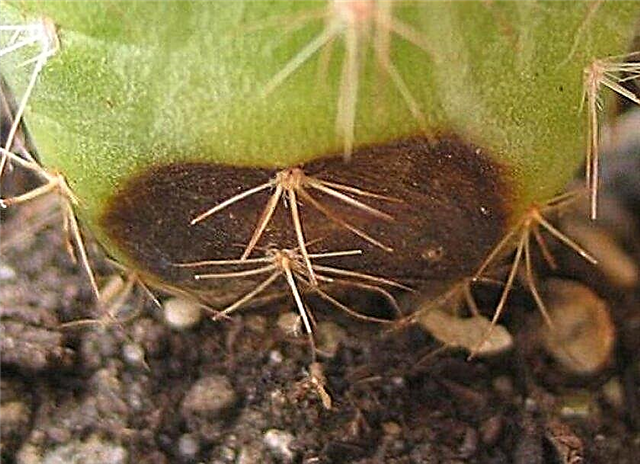
- Root rot - with damage to 50% of the roots of the plant, they can not be treated. The only option is to trim the roots along with the lower segment, and cut the rest. If 30-40% of the roots are affected, carry out an emergency transplant, cutting off the affected roots and treating them with activated charcoal. After the transplant, watering is carried out only after 3 weeks using the “Fundazole” solution.
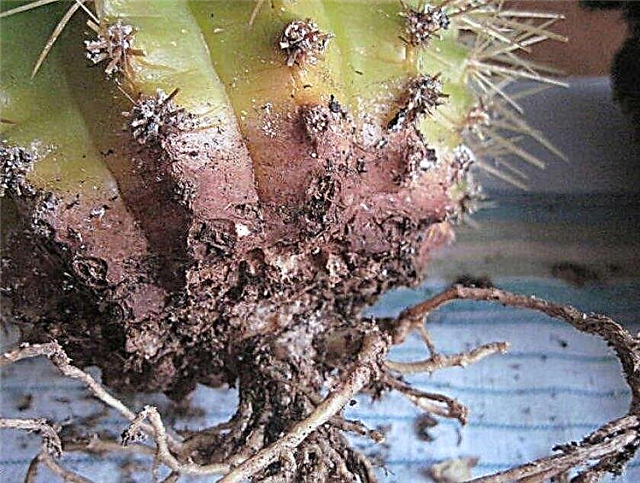
Among the pests on the shoots of prickly pear, the most common are:
Important! The cause of the spread of diseases and pests may be an excess of nitrogen in the soil. Eliminating the negative influence of the microelement, as well as deoxidizing the soil, will help to introduce 5 g of dolomite flour into each pot.
Subject to all the rules of agricultural technology, prickly pears bloom even in closed ground. Their benefit is undoubted, because plants carry not only aesthetic value, but also medicinal.








